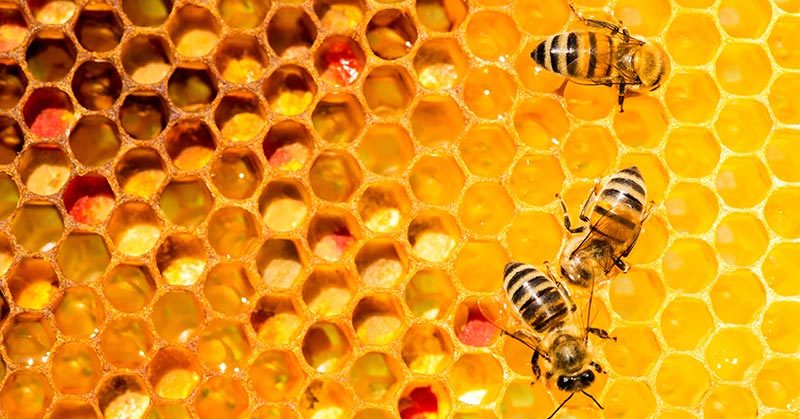Honey bees are one of the most important agricultural commodities in the United States and around the world. They are essential for pollinating flowers, fruits, and vegetables, and support approximately twenty billion dollars worth of crop production in the US every year. Worldwide, that number is 170 billion [1]. Over the last fifteen years, however, bee populations have been declining at an alarming rate. Because of a phenomenon called “colony collapse disorder”, some regions have lost up to ninety percent of their honey bee numbers as of 2019 [2]. The good news? Bee populations are increasing.
Finally, however, there is some good news. Recent data collections from the US Department of Agriculture show that in some states, bee populations are making a comeback.
Bee Populations are Increasing
According to the USDA, there was a fourteen percent increase in the number of honeybee colonies from January 2019 to January 2020. Michigan, Nebraska, Oklahoma, and Maine are experiencing the largest increases. There are now tens of thousands of new colonies in these states [3].
In the first half of 2020, the United States as a whole added approximately 420 thousand more colonies than were lost. Here is a breakdown of some of the states that saw the largest increases since 2018:
Maine: colony numbers grew by 73 percent.
Oklahoma: colony numbers grew by nearly 70 percent.
Nebraska: colony numbers grew by more than 60 percent.
Michigan: colony numbers grew by 50 percent.
Montana: colony growth of over 48 percent.
Wyoming: colony growth of over 42 percent.
Texas: colony growth of nearly 38 percent.
North Dakota: colony growth of over 35 percent.
Mississippi: colony growth of over 34 percent [4].
What’s Happening to the Bees?
While this news is a welcome change from what we’ve come to expect regarding bee populations, it isn’t consistent across the entire country. Other states, like California and Florida, have suffered significant losses in the same period of time.
Florida has lost nearly 43 thousand colonies since 2018, and California has lost a staggering 160 600. Despite this, California is still home to the largest number of bees in the country [4].
So what is going on here? Why are some states’ bee populations growing, while others are disappearing?
There are a number of reasons why bee populations in some regions are declining. One of the biggest problems is the varroa mite. This parasite invades hives and spreads disease.
Scott McArt is an assistant professor of pollinator health at Cornell University. He says other reasons populations are declining are a loss of habitat and poor management practices. Exposure to pesticides, pests, and other diseases within the hive are also contributing to the declining numbers [1].
Most experts agree that these issues in combination are what is causing colony collapse disorder. Some studies found that toxic levels of agricultural pesticides, called neonicotinoids, in honeybee colonies is the main issue. These substances kill queen bees and interfere with bees’ ability to navigate back to their hives.
Experts say, however, that they need to do more research to understand the role of neonicotinoids in colony collapse disorder. It is critical information, because in the United States, neonicotinoids are used on 95 percent of corn and canola crops.
They are also used on the majority of cotton, sorghum, sugar beets, apples, cherries, peaches, oranges, berries, leafy greens, tomatoes, potatoes and about half of all soybeans [5].
How to Keep Bee Populations Increasing in Your State
Whether you live in a state where bees are thriving or not, there are ways that you can help the pollinators in your area. Ohio State University offers the following four suggestions:
Make your backyard honey bee-friendly.
Not all flowers provide the amount of pollen bees need to survive. On top of that, with so much of our modern world covered in concrete, the bees are running out of places to pollinate. Whether you have a large backyard or a small balcony, planting a variety of flowers and trees within the space you have can go a long way.
Some blooms that are better for bees include crocus, sweet alyssum, sunflowers, coneflower, butterfly weed, geranium, bee balm, poppies, black-eyed susan, clover or apple trees [6].
Don’t use insecticides.
Insecticides are toxic to bees, so avoid using them at all costs. If you must use them on your lawn, look for one that is not toxic to honey bees. It is also important to avoid using herbicides on your lawn as well. They are not directly toxic to bees, but they kill flowering “weeds” (like dandelions) that are important sources of pollen [6].
Don’t kill bees.
As annoying as it can be to have a bee buzzing around your head, resist the urge to kill it. Two mating bees could be the difference between an eventually thriving hive or none at all [6].
Our changing environment has a direct impact on bee populations. Without bees, we won’t be able to produce the amount of food we need to feed the world. While the increased numbers in some states are encouraging, we must continue to work to improve conditions so that these important insects can survive.
While bee populations are increasing, we still still want to do our part. When we protect the bees, we protect ourselves.
Keep Reading: A small city is devoting 1,000 acres of land to America’s vanishing bees
- https://abcnews.go.com/US/40-decline-honey-bee-population-winter-unsustainable-experts/story?id=64191609
- https://www.natgeokids.com/za/discover/animals/insects/honey-bees/
- https://downloads.usda.library.cornell.edu/usda-esmis/files/rn301137d/nc5819380/t148g6070/hcny0820.pdf
- https://www.metrotimes.com/table-and-bar/archives/2020/09/14/bee-lieve-it-or-not-michigan-bee-populations-are-on-the-rise-according-to-new-data
- https://e360.yale.edu/features/declining_bee_populations_pose_a_threat_to_global_agriculture
- https://insights.osu.edu/sustainability/bee-population

